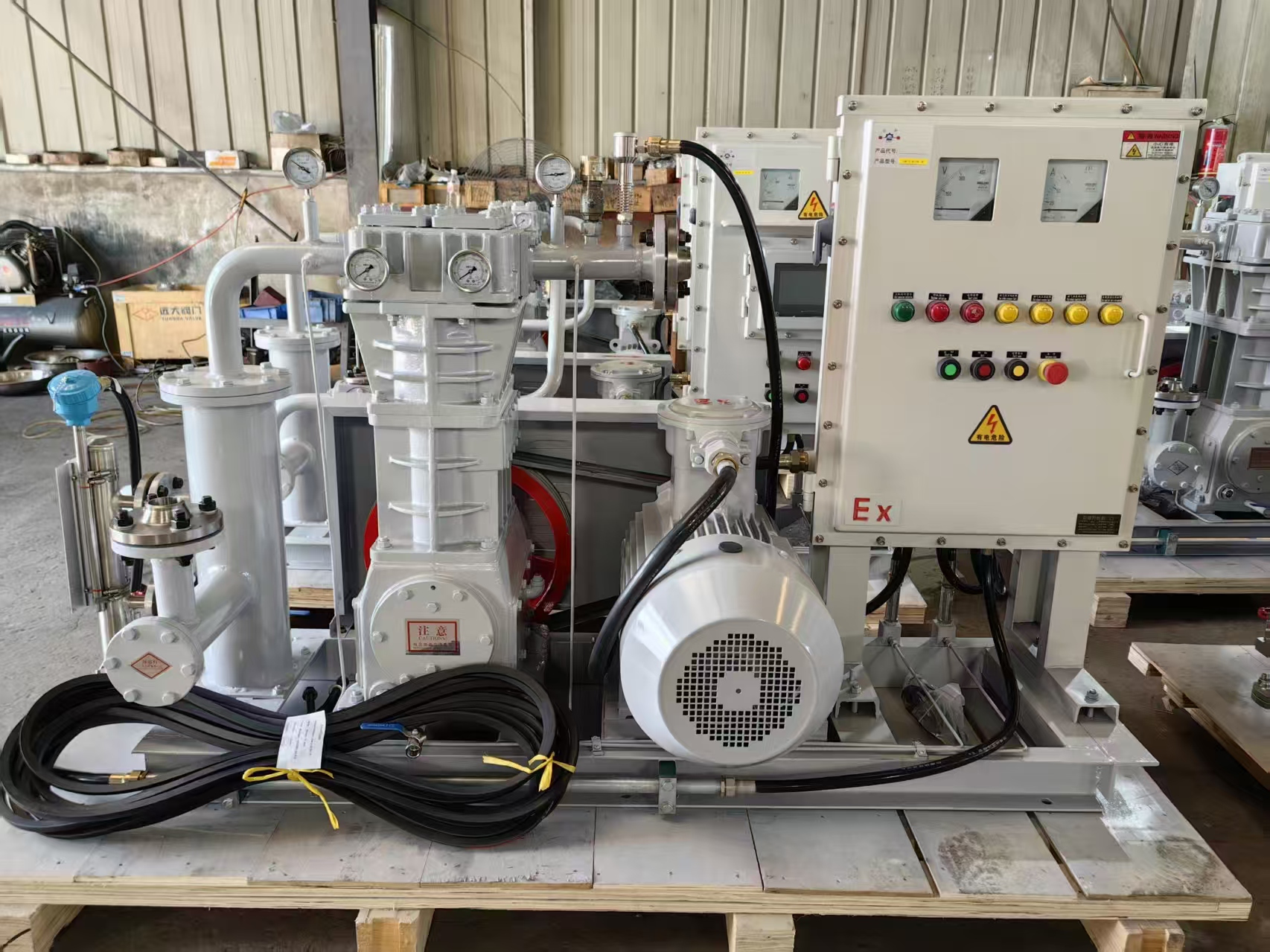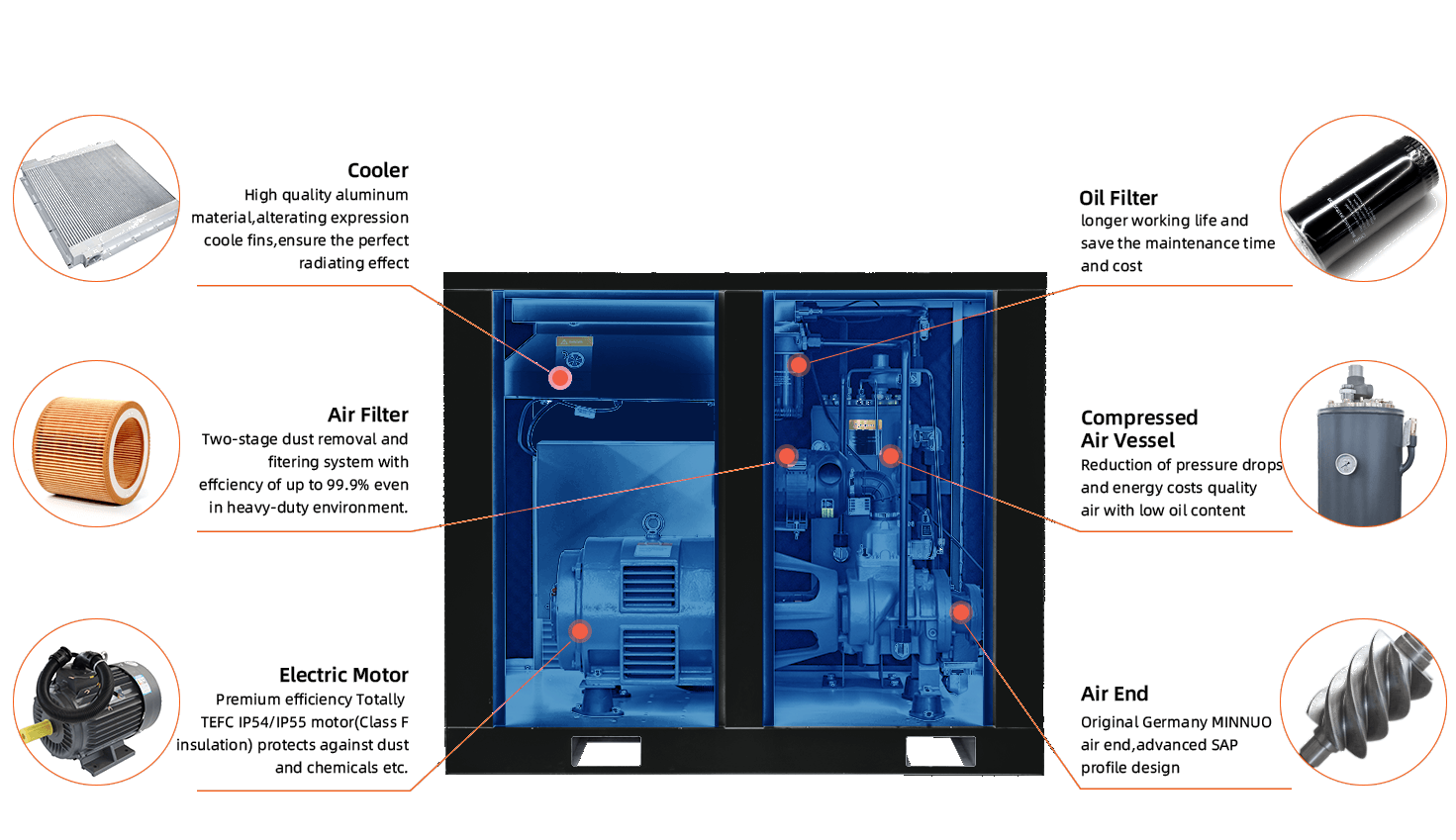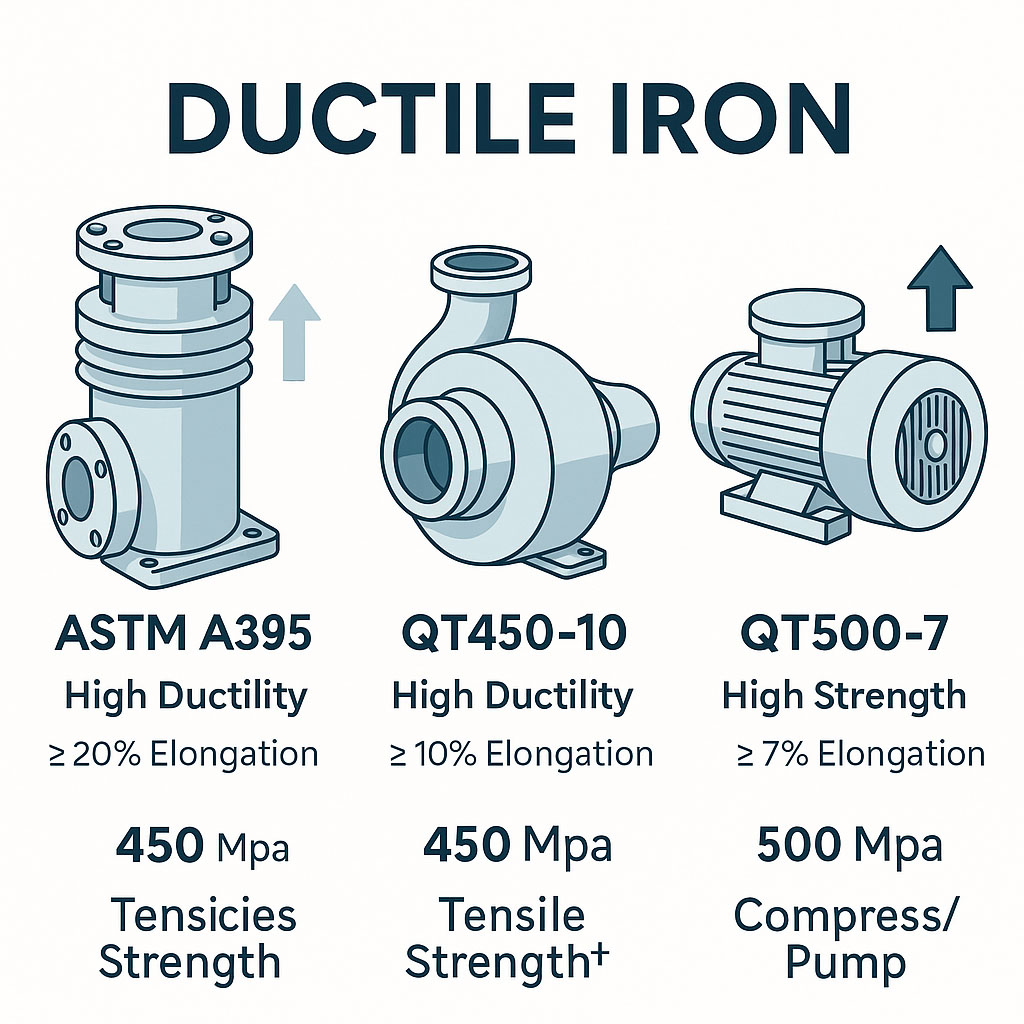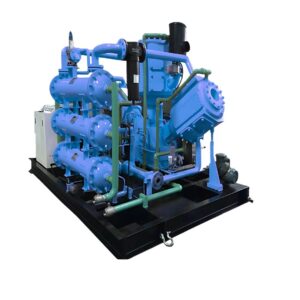Die Verdichtung von Kohlendioxid erfordert API 618-konforme Kolbenkompressoren, die für den Umgang mit aggressiven CO₂-Strömen bei hohen Drücken ausgelegt sind. Eine ordnungsgemäße Konstruktion minimiert die Pulsation, gewährleistet Zuverlässigkeit und erfüllt die strengen betrieblichen Erwartungen. Hier sind fünf wichtige Design-Tipps um die Leistung und Betriebszeit von Kohlenstoffabscheidungssystemen zu maximieren.
1. Entwickelt für hohen Druck und präzises Laden
Kompressoren für die Kohlendioxidabscheidung benötigen oft einen Auslassdruck von bis zu 150 bar (2.200 psig) oder mehr. . API 618-Aggregate müssen unter diesen extremen Belastungen eine zuverlässige Kompression liefern. Konstruktion von Kolben, Stangen, Verschleißbändern und Kurbelwellen mit Werkstoffen (z. B. Schmiedestahl, Wolframkarbidbeschichtung) und Toleranzen, die auf die CO₂-Chemie und zyklische Belastung zugeschnitten sind .
2. Robuste Pulsations- und Vibrationskontrolle
Die Flüssigkeitseigenschaften von CO₂ können starke Pulsationen in Abflussrohrleitungen verursachen. Die API 618-Norm erfordert eine akustisch-mechanische Konstruktionsanalyse gemäß Design Approach 2 oder 3 unter Verwendung von Werkzeugen wie TAPS, um Pulsationskräfte zu simulieren und eine mechanische Frequenztrennung sicherzustellen. Stellen Sie sicher, dass Rohrleitungsstützen, Pulsationsflaschen und Verankerungen so konstruiert sind, dass Resonanzermüdung und Systemschäden vermieden werden.
3. Minimierung von Leckagen und Umweltemissionen
CO₂-Systeme müssen aufgrund gesetzlicher und klimatischer Vorgaben die Emissionen minimieren. Kompressoren sollten gespülte Packungsgehäuse, eine Spülgasfunktion und Entlüftungsauffangsysteme haben, um Leckagen an Dichtungen zu vermeiden, ohne CO₂ direkt in die Atmosphäre abzugeben. . Die API 618-Verpackung unterstützt diese Konfigurationen für die Leckagekontrolle und die Einhaltung der Sicherheitsvorschriften.
4. Design für lange Wartungsintervalle und mechanische Integrität
API 618-konforme Prozesskompressoren sind für eine lange Hublebensdauer ausgelegt - bis zu drei Jahre zwischen größeren Überholungen durch konservative Kolbengeschwindigkeiten und robuste mechanische Konstruktion . Fügen Sie Distanzstücke hinzu, um das thermische Wachstum auszugleichen und die Dichtungsintegrität unter zyklischer Belastung zu erhalten.
5. Befolgen Sie die ASME- und API-Normen für die gesamte Systemkonstruktion
Gemäß API 618 und ASME B31.3/B31.8 müssen Kompressorinstallationen für einen zuverlässigen Betrieb eine ordnungsgemäße mechanische Sicherung, eine Analyse der Rohrspannung und eine akustische Validierung umfassen. . Überprüfen Sie Umbauten oder Nachrüstungen stets anhand der aktuellen Akustikstandards API 618/688, um Schwingungsausfälle zu vermeiden.
✅ Warum diese Tipps wichtig sind
| Tipp | Nutzen Sie |
|---|---|
| Hochdrucktechnische Teile | Zuverlässige CO₂-Injektion bei Zieldrucken |
| Pulsationskontrolle | Ermüdungsbrüche verhindern, Ausfallzeiten reduzieren |
| Eindämmung von Lecks | Einhaltung von Vorschriften und Umweltsicherheit |
| Langlebige Konstruktion | Geringere Lebenszykluskosten, weniger Stillstandzeiten |
| Normenkonforme Technik | Feldzuverlässigkeit und Codesicherheit |
KEEP-WINs Kompressorlösungen zur Kohlenstoffabscheidung
Als zuverlässiger Experte für Prozessgasverdichter KEEP-WIN liefert vollständig API 618-konforme CO₂-Kompressor Pakete für die Kohlenstoffabscheidung. Unsere Systeme umfassen hochpräzise Kolben und Stangen, kundenspezifische Pulsationsdämpfer, Spülsysteme und die technische Integration von Rohrleitungen.
Erkunden Sie unser Produktangebot:
-
API 618 Kolbenkompressor-Kufen - Gebaut für Hochdruck-CO₂ und langfristige Zuverlässigkeit
-
Prozessgas-Kompressorlösungen - Entwickelt für Kohlenstoffabscheidung, Wasserstoff und anspruchsvolle Prozessgasanwendungen
API 618-Kompressoren in Kohlenstoffabscheidungssystemen müssen qualitativ hochwertige Maschinen sein, die für Druck, Pulsationskontrolle, Leckagebekämpfung und lange Lebensdauer ausgelegt sind. Die Beachtung dieser fünf Konstruktionstipps stellt sicher, dass Sie CO₂-Kompressoren einsetzen, die einen sauberen, sicheren Betrieb mit minimalem Risiko gewährleisten. Partnerschaft mit KEEP-WIN für schlüsselfertige Hochdruck-Kolbeneinheit Lösungen, die für Ihren Bedarf an Kohlenstoffabscheidung optimiert sind.
👉 Sind Sie bereit, ein maßgeschneidertes Kompressorpaket zu entwickeln? Kontaktieren Sie KEEP-WIN für fachkundige Beratung und Systemspezifikationen.











